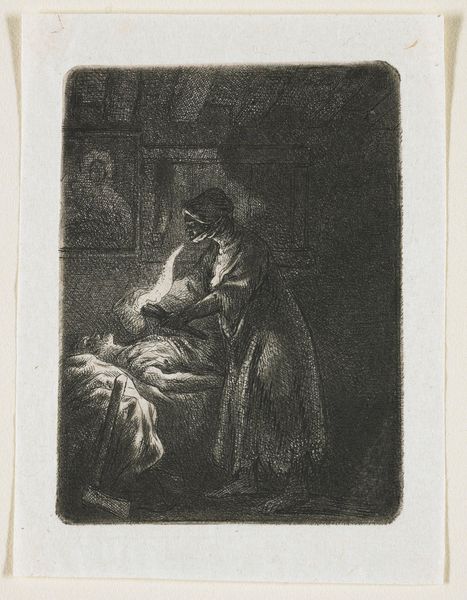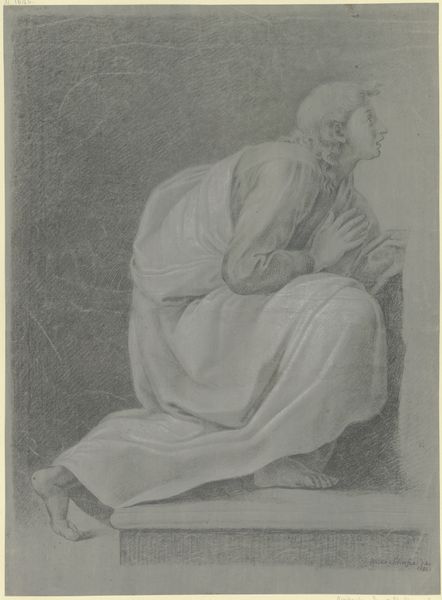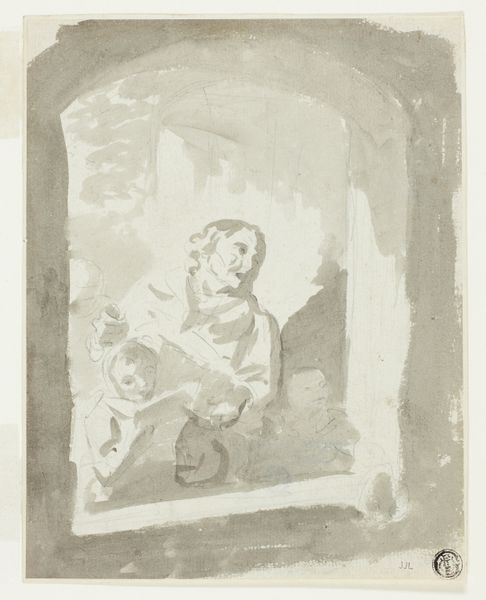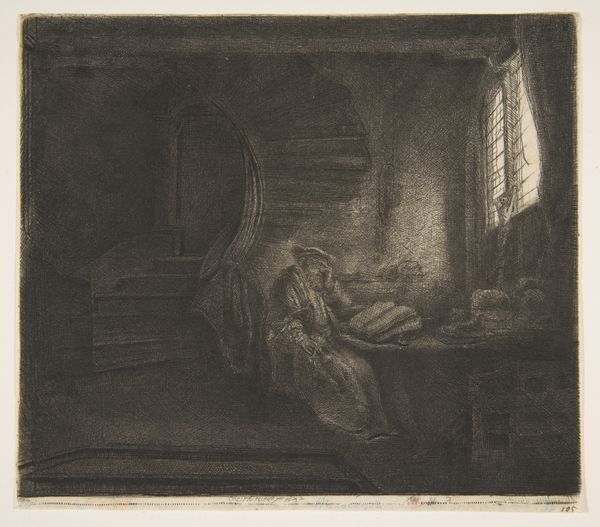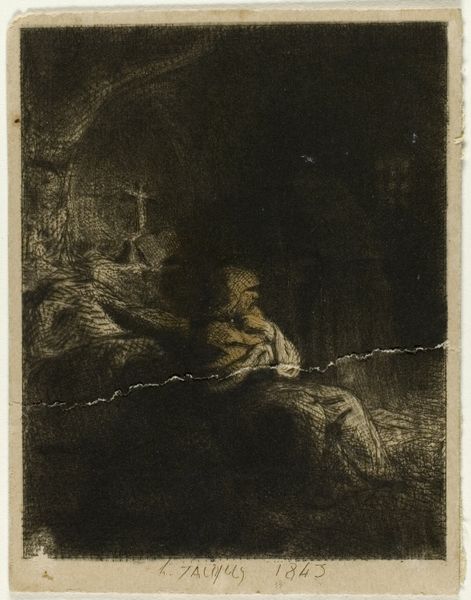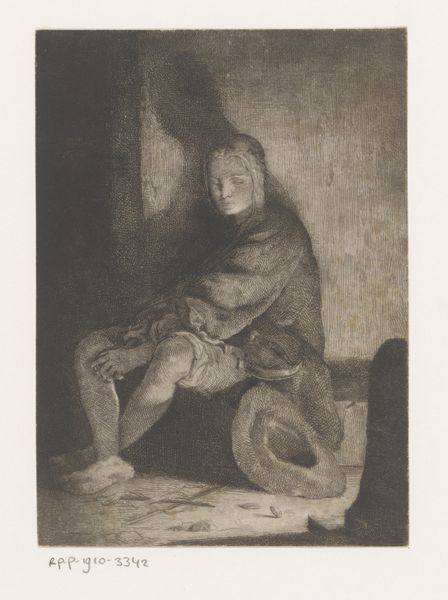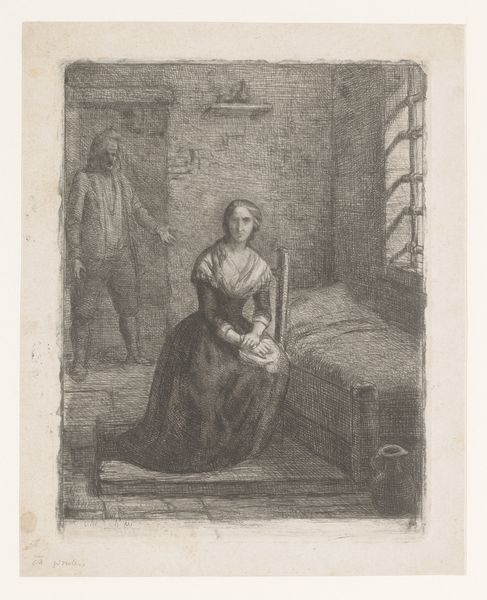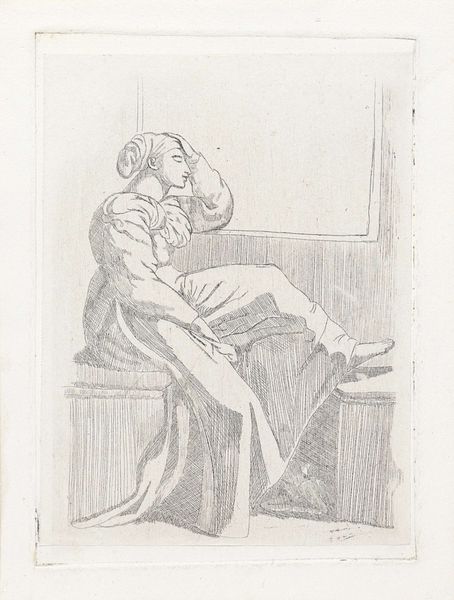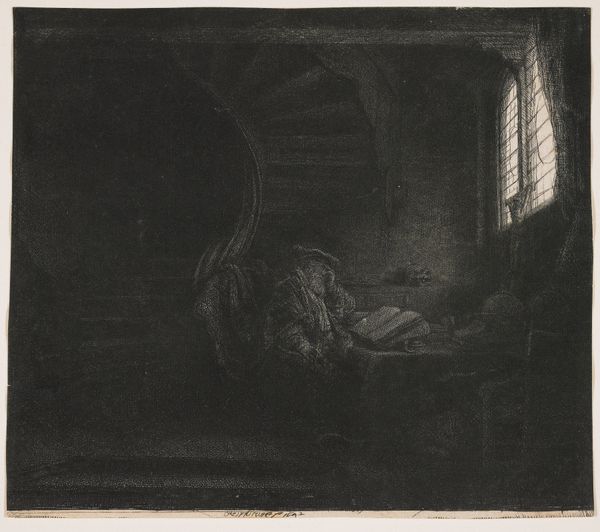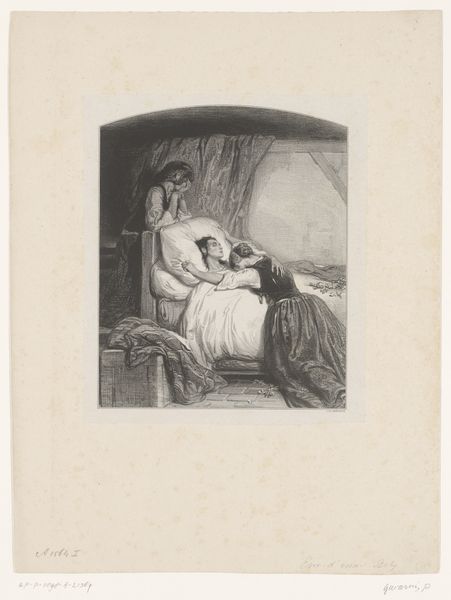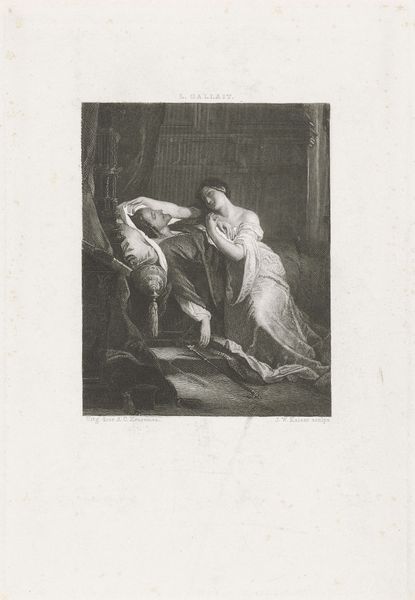
drawing, dry-media, charcoal
#
portrait
#
drawing
#
narrative-art
#
charcoal drawing
#
figuration
#
dry-media
#
charcoal
#
academic-art
#
charcoal
Dimensions: sheet: 31.75 × 25.56 cm (12 1/2 × 10 1/16 in.)
Copyright: National Gallery of Art: CC0 1.0
Curator: This is "The Prayer," a charcoal drawing made by William Morris around the 1860s. What’s your initial response to the work? Editor: Somber. It's overwhelmingly dark. The composition seems centered around this kneeling figure and the standing man with the raised face—but everything else recedes into the shadows. Curator: It's true that Morris often explored religious themes during this period, aligning with broader Victorian interests. Think about the social emphasis on faith and moral uprightness at the time. The choice of subject is, in itself, telling. Editor: Absolutely. The way he manipulates charcoal—smudging and blending it creates this really muted and atmospheric quality. The stark contrast between light and shadow gives it a potent, almost spiritual aura. Curator: Yes, it invokes that mood, but also the power dynamics present. A figure is kneeling, subordinate. The male figure is presented as interceding. Note how that relates to prevalent patriarchal structures. Editor: You know, beyond the thematic, there’s just the visual weight of the vertical column in the composition, dominating the right side. How the diffused light spills through at the top of the arch. Curator: Good point. Morris’s interest in medievalism also comes into play. The setting feels deliberately archaic, reinforcing a sense of timeless morality but it’s rooted in specific cultural norms. How does the image itself engage in this dialogue between morality and power? Editor: Perhaps the subdued nature is its most profound choice. Restrained yet evocative. Curator: I think understanding the broader social narratives in which this piece participates enhances that perception. Editor: Agreed. Viewing it from both the visual and historical aspects really shows William Morris' complex interplay.
Comments
No comments
Be the first to comment and join the conversation on the ultimate creative platform.
